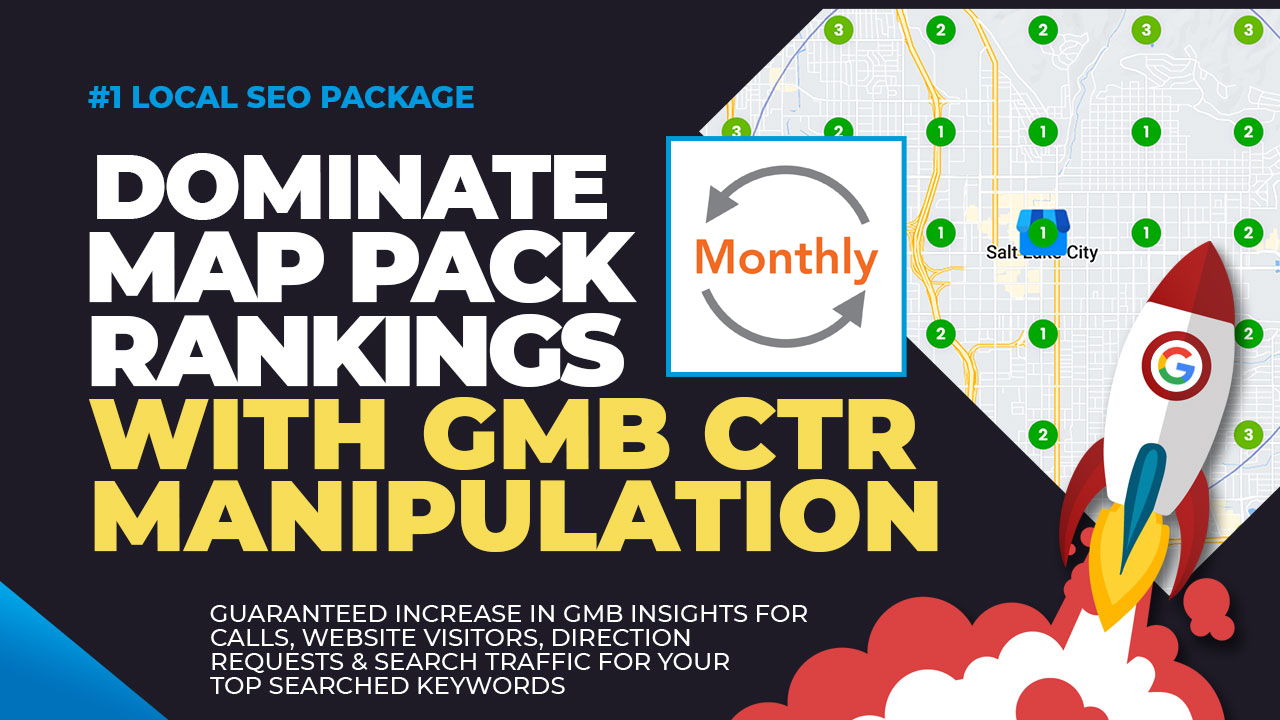Just How to Determine the Effect of CTR Manipulation on Your Marketing
Understanding the nuances of click-through price (CTR) adjustment in marketing is vital for services striving for authentic individual involvement. By analyzing vital metrics such as conversion rates and bounce rates, marketers can discover possible discrepancies that might emerge from artificial enhancements.
Comprehending CTR Adjustment
Comprehending CTR control is crucial for online marketers seeking to enhance their campaigns and make certain information integrity. Click-through rate (CTR) refers to the ratio of customers who click a particular link to the total variety of users who see the ad or web content. Manipulation of this metric can occur through different ways, including the use of misleading marketing methods, click farms, or automated robots. These methods can synthetically blow up CTR figures, resulting in misdirected advertising approaches and misallocation of sources.
The implications of CTR adjustment expand beyond mere data distortion; they can weaken count on electronic advertising and marketing. When organizations depend on inflated metrics, they may purchase ineffective projects, eventually harming their return on financial investment. In addition, systems may punish advertisers participating in such methods, causing additional ramifications for their advertising and marketing efforts.
To properly deal with CTR control, marketing experts must create a thorough understanding of their information resources and analytics devices. By utilizing advanced monitoring approaches and inspecting traffic resources, they can make certain and determine irregular patterns that their performance metrics mirror genuine individual interaction - CTR Manipulation Press Release. This watchfulness is essential for cultivating long-term success in a progressively affordable electronic landscape
Key Metrics to Analyze
Reliable analysis of key metrics is vital for assessing the real efficiency of advertising and marketing projects and spotting potential CTR adjustment. One main metric to consider is the Click-Through Price (CTR) itself, which stands for the ratio of users that click an advertisement to the total variety of individuals that watch it. A sudden spike in CTR may suggest manipulation, requiring further investigation.
In addition, keeping an eye on conversion rates is crucial. A high CTR with a low conversion rate could signify that the clicks are not real or that the targeting is misaligned (CTR Manipulation). Assessing bounce prices can offer insight right into customer interaction; a high bounce price after a click may recommend that the web traffic is not quality-driven.

Devices for Dimension

Furthermore, A/B screening tools such as Optimizely or VWO can facilitate experimentation with various advertisement variations to determine which components drive greater CTR. These devices allow marketing experts to assess real-time efficiency and make data-driven modifications. Social network analytics devices, like Hootsuite or Sprout Social, can likewise be crucial in comprehending CTR within social platforms, supplying insights into target market actions and interaction fads.
In addition, heat mapping tools, such as Hotjar, can expose just how users communicate with advertisements, assisting to identify where renovations can be made. Incorporating these devices creates a robust dimension framework, enabling marketing experts to recognize the results of CTR control efficiently. Ultimately, the best choice of dimension tools is critical for making educated advertising and marketing decisions and optimizing campaign performance.

Evaluating Long-term Effects
One should consider the long-term results of CTR control on overall advertising and marketing performance, as short-term gains can commonly mask much deeper ramifications. With time, artificially blew up click-through rates might cause lessened trust fund from consumers and internet search engine alike. When users continuously come across misleading techniques, they may end up being reluctant to engage with the brand name, resulting in lower conversion prices in the future.
Furthermore, formula updates from systems such as Google are designed to focus on genuine engagement over inflated metrics. Companies that depend on CTR adjustment may find themselves punished, leading to a decrease in natural reach and exposure. This can have a cascading effect on brand name reliability and client commitment, ultimately undermining the really objectives that the first control sought to accomplish.
In addition, the data collected from manipulated CTR may misdirect marketing professionals in their strategy growth. Relying upon skewed information can cause misguided projects that stop working to resonate with the target audience, resulting in lost resources and missed opportunities. Consequently, it is important for online marketers to examine the long-lasting ramifications of CTR control and focus on sustainable, honest involvement strategies for lasting success.
Moral Considerations in CTR Manipulation
In the realm of electronic advertising, ethical factors to consider bordering CTR manipulation are critical. While the desire to enhance click-through rates (CTR) can bring about temporary gains, the potential long-lasting consequences on brand honesty and consumer trust can not be forgotten. Manipulating CTR often includes methods that might deceive individuals, such as clickbait headlines or misleading marketing methods. These techniques can lead to a short-term increase in website traffic yet might eventually wear down consumer self-confidence.
Furthermore, moral problems encompass conformity with policies such as the Federal Trade Commission (FTC) standards, which mandate transparency in advertising and marketing. Failing to follow these standards can subject businesses to lawful ramifications and harm their reputation. Marketing experts must think about the effects of their techniques on user experience and the more comprehensive market landscape.
Furthermore, the rise of fabricated knowledge and automation in advertising and marketing provides further moral problems. The potential for mathematical prejudice or the exploitation of consumer information questions regarding accountability and justness. Ultimately, moral advertising techniques ought to focus on transparency, sincerity, and regard for the consumer, cultivating long-term connections that transcend simple metrics like CTR. Stabilizing performance with ethics is important for lasting success in the digital market.
Verdict
Finally, determining the influence of CTR adjustment on marketing requires an extensive analysis of key metrics, consisting of GMB CTR Manipulation click-through prices, conversion rates, and bounce rates. Using analytics tools and conducting A/B testing can provide useful understandings into user engagement and traffic quality. Moreover, evaluating long-lasting effects and adhering to moral factors to consider is crucial for educated decision-making. Ultimately, a data-driven approach makes sure that advertising and marketing methods work and aligned with real customer interactions.
Comprehending the subtleties of click-through price (CTR) adjustment in advertising is vital for businesses making every effort for authentic individual engagement.Reliable analysis of vital metrics is important for evaluating the real performance of marketing campaigns and detecting prospective CTR manipulation.One need to consider the long-term impacts of CTR adjustment on overall advertising efficiency, as short-term gains can commonly mask deeper ramifications.In the world of digital advertising, moral considerations surrounding CTR control are paramount.In conclusion, determining the impact of CTR adjustment on advertising calls for a thorough analysis of key metrics, including click-through prices, conversion prices, and bounce prices.